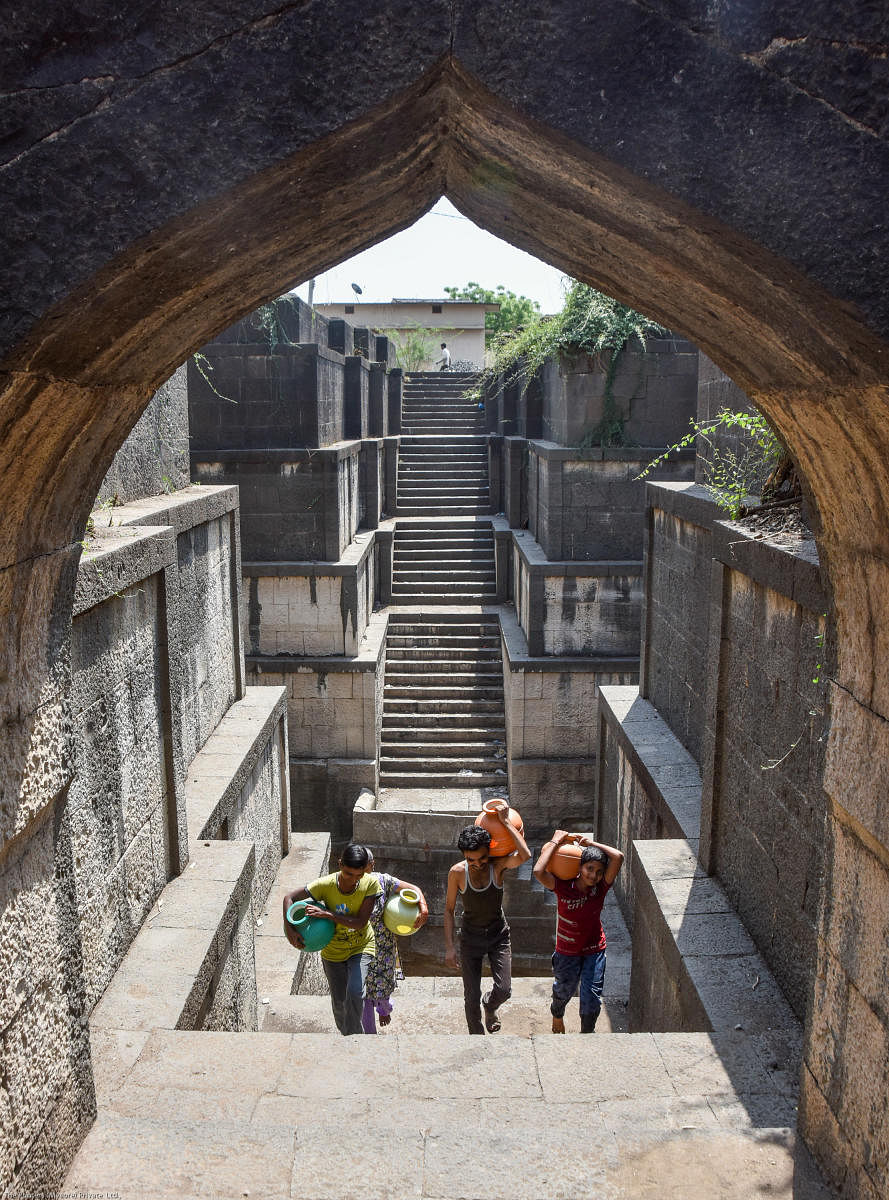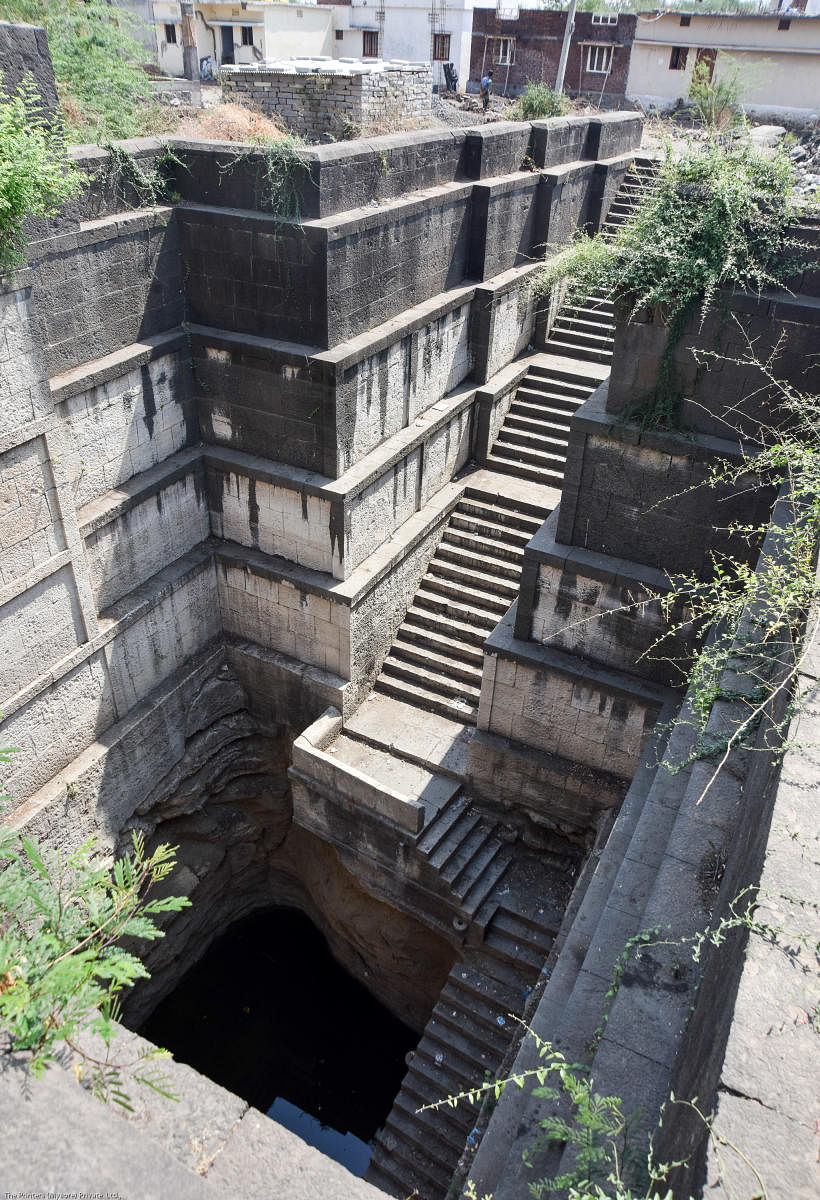
Hirapur is a small locality in the historically famed Kalaburagi city. The locality, which was under the rule of Bahmani Sultanate, is a testimony to the bonhomie and brotherhood that prevailed among the Hindus and the Muslims in those days. As a symbol of their peaceful coexistence, the numerous wells on the premises of the temples and dargahs, stand silently and stoically to drive home the point.
As we dig deep into the region’s bygone era, we realise how Hirapur got its present name. Queen Chand Bibi Sultana, the wife of Ali Adil Shah I, was a lady of many virtues. She was instrumental in getting the beautiful Hirabibi Masjid and Sayyad Abid Shal Wali Dargah constructed in 1585. A good number memorials of the Bahmani rulers are also located at Hirapur. However, the Hirabibi Masjid (also known as Maqbara Ki Masjid) stands apart from the rest.
The wells of Hirapur speak volumes about the socioeconomic scenario during the Bahamani rule. While strolling through the sun-baked streets of Hirapur, one can realise that most of the wells are in a ruined state. The Gouthappa Bhavi, Rangojiya Bhavi, Shankarlinga Bhavi, Boralinga Bhavi, Jyotirlinga Bhavi, Ibrahim Ali Adil Shah Masjid Bhavi, Barafkhana Bhavi and Dargah Bhavi are among a few which have stood the test of time. And all these wells were constructed in the vicinity of temples and dargahs and thereby bear the names of the respective deities.
Traditional wisdom
Most of them are at least 440 years old and were a major source of water supply to Kalaburagi city until two decades ago. Lack of maintenance and negligence have rendered them lifeless and yet it is admirable to note that these structures of architectural splendour continue to remain stout and strong during every season. Neither a stone has moved nor the structures are damaged. One can marvel at the manner in which the rulers ensured that the traditional wells remained as a centre of attraction for several years to come, apart from quenching the thirst of people.
Spacious, sturdy, solid and sound, the wells were built in a square shape and were supported by walls on three sides and an arched entrance on one side which led to a flight of steps to the bottom of the well. Strong walls and artistic arches allowed the sun rays to penetrate inside. Pulleys were fitted above, at the ground level, for those who could not step into the well.
The Barafkhana Bhavi was constructed in the Arabian style of architecture. During peak summer, huge chunks of ice were prepared in this locality which was used in cold drinks. Thus the well earned its name Barafkhana.
The well is about 100 feet deep and 100 X 100 feet wide and is erected out of stones. The structure depicts the artistic skills of the architects during those times. The entrance to the well is from one side and the exit is on the opposite side, facilitating the smooth flow of traffic.
The Jyotirlinga Bhavi located a few metres away is equally deep, huge and wide and holds pure and sweet water in its bosom. A tour of these wells in enough to prove that the Sun City boasts of such wonderful sources of water and that efficient utilisation of water from these wells would have addressed the water crisis to a large extent.
What makes these majestic structures all the more special is the fact that these wells have inscriptions engraved on their walls which throw light on many a fact.
There are 12 such stone inscriptions, three in Sanskrit and nine in the Persian language. The inscription engraved on the walls of Shankarlinga Bhavi, in 1656, is still legible. It explains that Bikkoji Somaji Mokhed belonging to the Vyshya community had constructed the Someshwara and Basaveshwara temples apart from the well to quench the thirst of the devotees visiting these temples.
Peek into history
An inscription on the walls of another well in the vicinity installed in 1687 explains that a person by name Rangoji constructed a good number of wells and shelter homes to feed the hungry and the thirsty. Indeed, water crisis prevailed during the Bahamani rule as well, but various measures were in place to address the issue.
A stone edifice installed on the walls of Gouthappa Bhavi between 1728 and 1733 depicts that good Samaritans in those days strived for the welfare of the common man. Once such Samaritan by name Gouthama was responsible for the construction of shelter homes. He also developed a few gardens and a well.
Apart from these, the nine stone inscriptions in the Persian language were installed much before 1585. These inscriptions can help throw light on the rich history of Hirapur. Subjected to negligence with the passing of time, the information etched on them have faded.
It is unfortunate to note that these wells which were once the lifelines of the people residing here have now become a subject of utter neglect.
What were supposed to be architectural splendours of the bygone era have now become a dumping yard as trash from the city finds a place in these wells.
As newer means of water sources replaced the old wells, these ancient and traditional water bodies were pushed to oblivion. What is most disappointing is the fact that the custodians of civic laws, who are supposed to keep the city clean, have never once thought of reviving them.
Even as the residents of Kalaburagi struggle for every drop of water, hardly any efforts are made to revive them. Instead of regaining their lost glory and earning their place of pride on the pages of history, alas, the traditional water bodies have turned into structures of sheer neglect and ignorance.
(Translated by Jyotsna P Dharwad)
